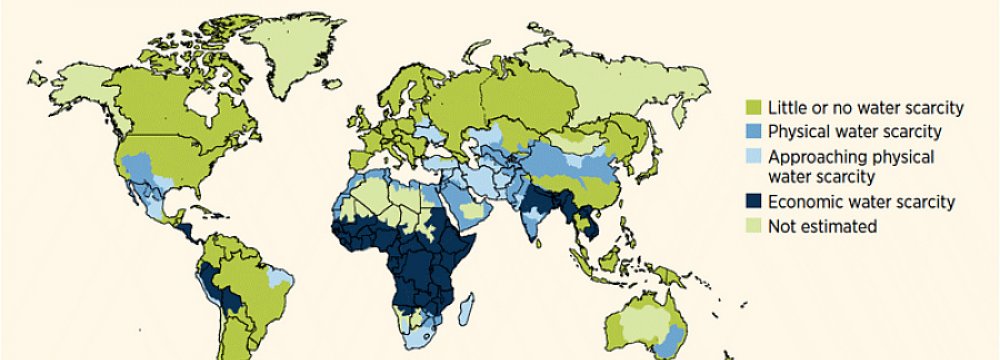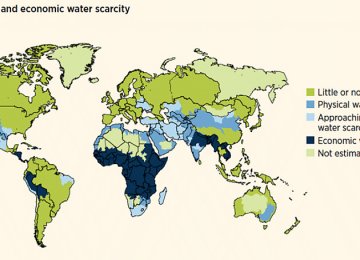Water consumption in the developed and the developing world is different. In countries with low to average GDP, industry accounts for 10% of total water use, while agriculture takes up 80%. In the developed world, industrial and agricultural sectors account for 60% and 30% of water consumption respectively.
Although a developing country, Iran does not reflect the abovementioned figures. Agriculture gobbles up 92% of the country’s water, while the industrial sector uses a meager 2%, according to a report by ILNA.
Iran has a hot, dry climate and is located in the world’s most water-stressed region. Factors such as increasing population, urbanization, development of industrial and agricultural sectors and natural phenomena have all taken a toll on Iran’s renewable water resources in the few decades.
Dwindling Resources
Total renewable water resources in 1921 topped 13,000 cubic meters per person, which plummeted to 1,400 cubic meters per person in 2014. Unless something is done about Iran’s worsening water problem, the country is headed toward a crisis.
According to UN reports, almost half the world’s population will be living in areas of high water stress by 2030, including between 75 million and 250 million people in Africa. In addition, water scarcity in some arid and semi-arid places—such as Iran— will displace between 24 million and 700 million people.
By 2025, 1.8 billion people will be living in countries or regions with absolute water scarcity and two-thirds of the world’s population could be living under water stressed conditions.
What this means is that countries such as Iran will inevitably hit hard times. However, if immediate measures are taken and short- and long-term plans are devised, the country may be able to weather the proverbial storm and reduce the impact of the looming water crisis.
At present, Iran’s per capita water consumption is 204 liters per day, which is above most European countries’ with access to more water reserves, such as Spain (200 liters/day), Sweden (164 liters/day), Germany (129 liters/day) and Belgium (112 liters/day).
Of course, Iran’s per capita water consumption falls below countries such as Finland (213 liters/day) and Canada (326 liters/day), but one must notice that these countries have access to significantly more water resources.
Thirsty Neighbors
Persian Gulf states—Bahrain, Kuwait, Oman, Qatar, Saudi Arabia and the UAE—face severe water shortage and use desalination systems to meet water demand. High evaporation rate, extremely hot climate and lack of restrictions on water use combined with access to desalinated water have all contributed to the high per capita water use of these countries, with Bahrain having the lowest per capita water consumption (1058 liters/day) and the UAE the highest (2027 liters/day).
Despite having virtually no renewable resources, these countries have resorted to innovative ways to deal with water shortage, such as using water desalination systems and recycled water.
It is high time Iranians started taking the impending water crisis seriously. Officials must double their efforts to increase public awareness and brainstorm ways to reduce demand, because increasing supply—if it were even possible—would only delay the inevitable.
Prioritizing water needs, minimizing wastage, upgrading irrigation and reducing water pollution will help Iran deal with water scarcity.





